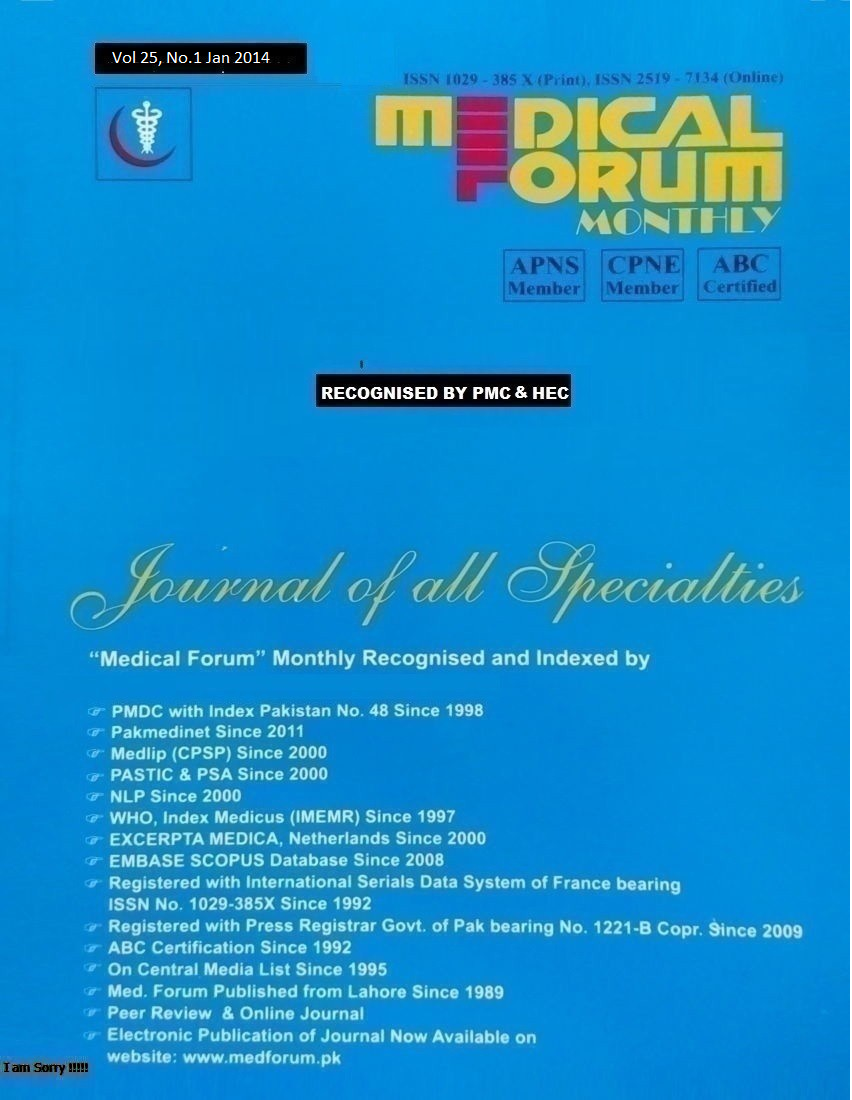
8. Prediction of Large Esophageal `Varices in Patients with Decompensated Cirrhosis by Child-Pugh Score, in Medical Unit-II, Chandka Medical College Hospital, Larkana
1. Muhammad Aslam Soomro 2. Imdad Ali Ansari 3. Ghulam Yasin Abro
4. Sayed Aftab Ahmed Shah 5. Sayed Shafiq Rahman Shah
1. Senior Registrar of Medicine 2. Asstt. Prof. of Medicine 3. Senior Registrar of Medicine 4. Prof. of Medicine 5. Senior Registrar of Medicine, Chandka Medical College & Hospital Larkana.
ABSTRACT
Objective: To assess prediction of large esophageal varices in patients with decompensated cirrhosis by Child-Pugh score, in Medical Unit-II, Chandka Medical College Hospital Larkana.
Study Design: Cross sectional study
Setting and Duration of Study: This study was carried out at Medical Unit II, Chandka Medical College & Hospital, Larkana from November 2011 to November 2012.
Materials and Methods: In this study 88 consecutive cirrhotic patients with ascites (those Patients who fulfilled the inclusion criteria) were included; blood samples for Serum bilirubin, serum albumin, and INR ratio were sent to single laboratory. Then, child Pugh score were assigned to each patient on the basis of clinical and to laboratory parameter. The ultrasound of abdomen was carried out for size of liver and spleen, portal vein diameter, and quantification of ascits. Eligible patients were subjected for upper gastrointestinal endoscopy for the presence of esophageal varices and their grading. The data was analyzed using SPSS version 19.
 Results: The mean age of enrolled patients was 43.19±7.1 years. Of 88 patients, 69 (78.4%) were male and 19 (21.6%) were female. Child Pugh class relation to number of patients were; 52, 20, and 16 in class A, B, and C respectively. While Child Pugh class relation to frequency of esophageal varices were; 6, 11 and 14 in class A, B, and C respectively. Frequency of grading of esophageal varices was; 4, 13, and 14 in grade one, two, and three respectively. Distribution of large esophageal varices (LEVX) in relation to child Pugh class is one in class A, two in class B and 11 in class C.
Results: The mean age of enrolled patients was 43.19±7.1 years. Of 88 patients, 69 (78.4%) were male and 19 (21.6%) were female. Child Pugh class relation to number of patients were; 52, 20, and 16 in class A, B, and C respectively. While Child Pugh class relation to frequency of esophageal varices were; 6, 11 and 14 in class A, B, and C respectively. Frequency of grading of esophageal varices was; 4, 13, and 14 in grade one, two, and three respectively. Distribution of large esophageal varices (LEVX) in relation to child Pugh class is one in class A, two in class B and 11 in class C.
Conclusions: It is concluded from this study that; as the child pugh score advances, the number and size of esophageal varices increases, and chance of absence of varices decreases. Key Words: Esophageal varices, Child Pugh score, Grades of varices
